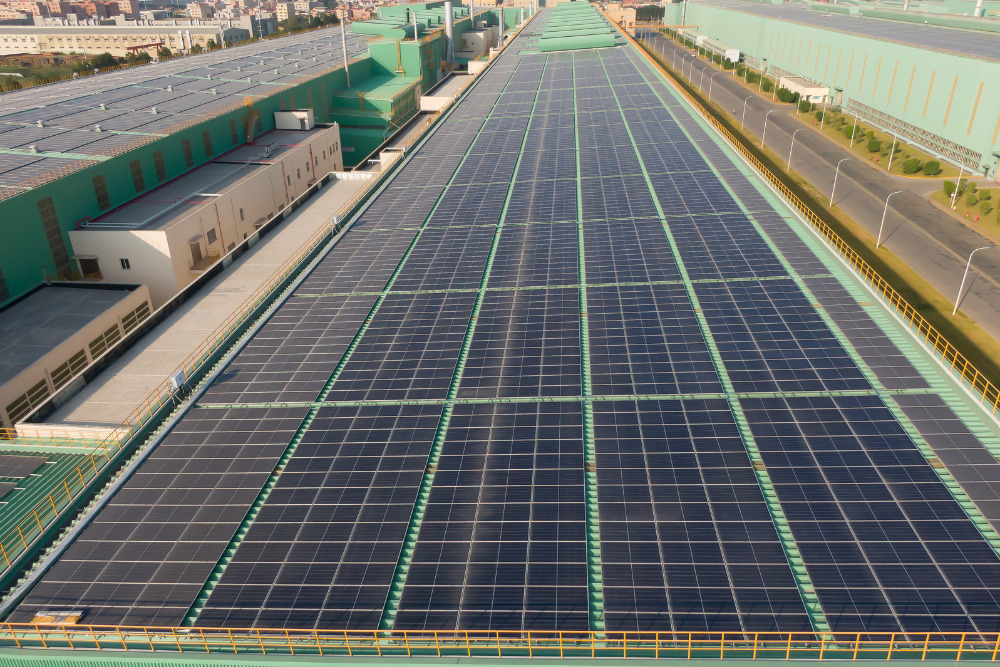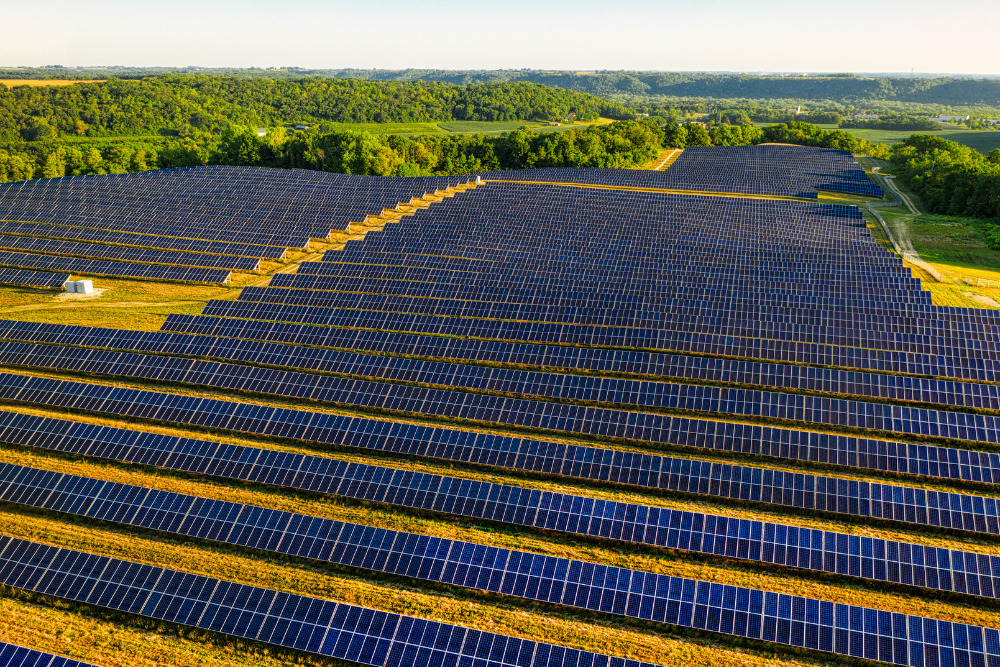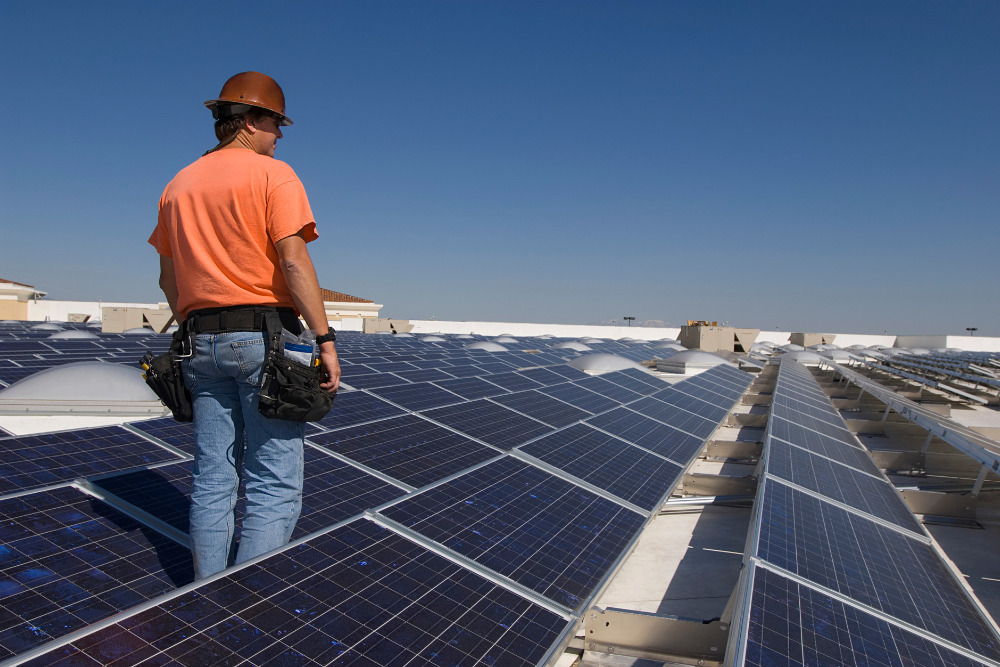
Grid-scale energy storage has emerged as a game-changing battery technology solution to overcome the unpredictable nature of renewable sources like solar and wind.
As we continue to find solutions to climate change and transition to cleaner and more sustainable energy sources, grid-scale energy storage has emerged as an innovative and promising solution. With the integration of grid-scale energy storage technologies, such as advanced batteries and pumped hydro storage, we now have the means to capture, store, and deploy renewable energy on a large scale.
Learn how grid-scale energy storage allows communities to utilize excess renewable energy, paving the way for a more sustainable power grid.
What Is Grid-Scale Energy Storage?
Grid-scale energy storage refers to large-scale electricity storage in a centralized system connected to the electrical power grid.
It plays a vital role in the future of the grid, aligning with President Biden's Build Back Better Agenda. This initiative aims to modernize and transform our energy infrastructure and make it more resilient.
It has been referred to as similar to having a solar battery system in a home but on a much, much larger scale.
Capturing And Storing Renewable Energy
The concept of grid-scale energy storage revolves around the efficient capture and storage of excess energy generated from renewable energy sources, like solar.
These sources often produce more electricity than is immediately needed, especially during very sunny days.
The power grid requires a balanced relationship between electricity generation and consumption to maintain a stable and reliable power supply. Grid-scale energy storage technologies address this challenge by storing excess energy and releasing it back into the grid when demand is high.
This store-and-release process stabilizes the grid and minimizes the impact of the fluctuating nature of renewable energy sources.

The U.S. Department of Energy’s Role In Grid-Scale Energy Storage
Recognizing the importance of grid-scale energy storage, the U.S. Department of Energy (DOE) actively supports developing and deploying these technologies. The department aims to accelerate the adoption of grid-scale energy storage projects through investment, research, and development, plus incentives for states and local utilities that make the energy transition.
The initiatives encourage the use of renewable energy sources, which improves grid stability, reduces greenhouse gas emissions, and paves the way for a cleaner and more sustainable energy future.
How Is Grid-Scale Energy Storage Currently Being Used?
In states like California and New York, where renewable energy use is high, grid-scale battery energy storage systems are becoming increasingly common.
These utility-scale storage facilities have significant storage capacity, typically ranging from 1-3 gigawatts or more, with corresponding energy storage capacities of several megawatt-hours (MWh) to support the integration of solar power, wind power, and other renewable sources.
In regions like Texas, where wind energy is abundant, storage plants utilizing vanadium redox flow batteries are gaining traction. These rechargeable systems store wind power during periods of high generation and discharge it during times of increased demand.
Hydropower is also used for grid-scale storage in several locations across the United States. Some notable examples include Bath County Pumped Storage Station, Virginia; Ludington Pumped Storage Plant on Lake Michigan; the Raccoon Mountain Pumped-Storage Plant, near Chattanooga, Tennessee; and Niagara Power Project, New York.

Who Uses Grid-Scale Energy Storage?
Grid-scale energy storage is primarily used by various entities involved in the energy industry and grid operations. These include:
- Utility companies generate, transmit, and distribute electricity to consumers. Utility companies use grid-scale energy storage to enhance grid stability, manage peak demand periods, and integrate renewable energy sources into their power generation portfolio.
- Developers and operators of renewable energy projects, such as solar and wind farms, employ grid-scale energy storage to optimize their generation capacity. It allows them to store excess energy produced during favorable conditions and deliver it during times of high demand or when renewable sources are not generating electricity.
- Independent Power Producers (IPPs) generate electricity independently from traditional utility companies. They may focus on specific energy sources or technology, such as renewables.
- Microgrids are localized power systems operating independently or in conjunction with the main power grid. Grid-scale energy storage plays a crucial role in microgrids by storing excess energy from local generation sources and managing the supply-demand balance for its customers.
- Transmission system operators are responsible for the transmission and coordination of electricity across large regions or countries. Grid-scale energy storage supports transmission system operators by managing grid congestion.
- Research institutions and grid operators who actively study and analyze the performance and integration of grid-scale energy storage technology. They contribute to advancing the knowledge and understanding of energy storage systems, optimizing their operation, and integrating them into the grid infrastructure.

Benefits Of Grid-Scale Energy Storage
- Helps maintain a stable and balanced electrical grid by regulating supply and demand fluctuations. It provides a buffer during peak demand periods and quickly releases stored energy to address imbalances.
- Incorporates renewable energy sources into the grid. Grid-scale storage allows excess renewable energy generated during favorable conditions to be stored and deployed when demand is high or renewable sources are not available to produce electricity.
- Provides ancillary services to the grid, such as reactive power control, voltage support, and frequency regulation.
- Enables peak shaving by storing excess energy during times of low demand and releasing it during peak demand hours. Smoothing out demand peaks reduces the strain on the grid infrastructure and allows for better load management.
- Provide backup power during grid outages or disruptions. Storing energy in advance means power plants can quickly respond and supply electricity to critical facilities, such as hospitals, emergency services, and other important infrastructure.
Types of Grid-Scale Energy Storage Technologies
Each of these grid-scale energy storage technologies offers unique characteristics and benefits. The choice of technology depends on the required energy capacity, duration of storage, response time, site suitability, and cost-effectiveness.
- Lithium iron phosphate batteries, a variant of lithium-ion batteries, are widely used for grid-scale energy storage due to their high energy density, efficiency, and proven performance. They store energy in electrochemical form and release it when needed. These batteries are commonly found in electric vehicles and portable electronic devices but are also suitable for large-scale applications.
- Pumped hydroelectric storage was one of the first forms of grid-scale energy storage. It uses excess electricity during off-peak hours to move water from a lower reservoir to a higher one. When electricity demand increases, the stored water is released, flowing downhill and passing through turbines to generate electricity. Pumped hydro offers significant potential, often providing storage capacities of several gigawatt-hours (GWh).
- Compressed Air Energy Storage (CAES) systems store energy by compressing air and keeping it in tanks or underground caverns. When electricity demand rises, the compressed air is released and expanded through turbines, generating electricity. Some CAES systems use natural gas combustion to improve efficiency.
- Flywheel energy storage systems store energy by spinning a rotor at high speeds and then converting the stored kinetic energy back into electricity when needed. These systems use high-strength materials and magnetic bearings to minimize energy loss due to friction. Flywheel energy storage offers rapid response times, high power output, and long operational lifetimes.
- Thermal energy storage technologies store energy in heat or cold form for later use. It holds hot or cold fluids and uses phase change materials or thermal storage in rocks or underground reservoirs. Thermal energy storage is particularly valuable for heating and cooling applications in buildings, industrial processes, and district energy systems.
- Flow batteries store energy in two liquid electrolyte solutions separated by a membrane. The electrolytes flow through the system during charging or discharging, allowing for scalable energy capacity and longer durations. They offer high efficiency and long cycle life.
- Advanced lead-acid batteries, also known as advanced lead-carbon batteries, improve upon traditional lead-acid batteries by incorporating carbon materials into the electrode. This design enhances the battery's energy density, cycling ability, and charge acceptance, making it suitable for grid-scale energy storage applications.
- Hydrogen energy storage uses electricity to produce hydrogen through electrolysis, which is stored and converted back to electricity through fuel cells or combustion. It offers long-duration energy storage and contributes to decarbonizing the energy sector when hydrogen is produced using renewable energy sources.
- Solid-state batteries are a promising emerging technology for grid-scale energy storage. They utilize solid electrolytes instead of the liquid or gel electrolytes found in traditional lithium-ion batteries. Solid-state batteries offer higher energy density, improved safety, faster-charging rates, and longer cycle life.
- Gravity energy storage systems use the gravitational energy of heavy objects to store and release energy. One example is lifting large weights or masses to a higher position when excess electricity is available and lowering them to release the stored energy when needed.
- Superconducting magnetic energy storage (SMES) systems store energy in a magnetic field that the flow of direct current (DC) in a superconducting coil creates. SMES technology gives fast response times, high power density, and excellent cycling capabilities.


